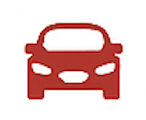Exploring Argentina's Passionate and Evolving Car Culture
A Deep-Rooted Automotive Affection
Car culture in Argentina is deeply embedded in the nation's identity. The country has a long history of automobile appreciation that dates back to the early 20th century, when the first vehicles began arriving in Buenos Aires. The fascination with cars transcended social classes, becoming a symbol of freedom, status, and modernity.
The passion for cars in Argentina grew alongside the nation's industrial development. As Argentina began to manufacture its own vehicles, particularly in the post-WWII era, a strong automotive sector emerged. This contributed not only to the local economy but also to the formation of a uniquely Argentine car culture that values mechanical knowledge, customization, and nostalgia.
Local Manufacturing and Iconic Models
Argentina has been home to domestic production from major automakers such as Ford, Volkswagen, Fiat, Peugeot, and Renault. Since the 1950s, local factories have built cars suited to the Argentine landscape and economy. For example, the Ford Falcon became a beloved and enduring presence on the roads, known for its durability and ease of repair.
Perhaps no vehicle has left a bigger cultural imprint than the Renault Torino. Produced by Industrias Kaiser Argentina (IKA) and later Renault, the Torino was hailed as 'the national car' and earned legendary status after its participation in the 1969 Nürburgring 84 Hours endurance race. Its blend of European engineering and Argentine grit symbolizes the ingenuity of the local auto industry.
Other models like the Fiat 600, often affectionately referred to as the 'Fitito', became icons in urban centers. Affordable and compact, the Fitito was a favorite among working-class families and continues to have a strong nostalgic following among classic car enthusiasts in Argentina today.
Motorsport: A National Obsession
Argentinians have a fervent passion for motorsport, particularly Turismo Carretera (TC), the oldest touring car racing series in the world, which began in 1937. Unlike Formula 1 or NASCAR, TC races take place on closed-road circuits that span cities and countryside, offering spectators close-up access to high-speed action. Iconic drivers like Juan Manuel Fangio and Guillermo Ortelli have become household names, inspiring generations of fans.
Juan Manuel Fangio, born in Balcarce, is considered one of the greatest F1 drivers of all time. He won five World Championships during the 1950s and remains a revered figure in Argentine sports history. His success sparked national interest in international motorsport and inspired the construction of circuits such as the Autódromo Juan y Oscar Gálvez in Buenos Aires, which has hosted numerous F1 and local racing events.
Beyond TC, rallying and karting also hold significance. Rural areas often host amateur rally events that draw local crowds, while karting serves as a developmental path for young drivers, including future F1 talents like José María López and Esteban Guerrieri. Motorsport in Argentina is not only a spectacle but a source of pride and aspiration.
Street Scene and Car Clubs
Argentina's car culture extends to urban and suburban streets where meetups, modifications, and pride of ownership are essential parts of the experience. Car clubs are widespread and often organized by make and model, such as Volkswagen Gol clubs or Fiat 147 communities. Enthusiasts gather at weekends in plazas and public parking lots to showcase their vehicles, exchange mechanical tips, and share stories.
The tuning and customization scene is vibrant. Modified suspensions, vinyl wraps, and performance upgrades are common, especially among younger drivers. These modifications are not merely cosmetic but reflect deep personal investment and creative expression. Buenos Aires, Rosario, and Córdoba are notable cities where such communities thrive.
Classic car clubs are equally active, with many members restoring vintage vehicles to their original glory. These restorations are often passed down through families and can take years to complete. Events like Expo Auto Argentino and classic car parades showcase the dedication and historical appreciation within the car-loving population.
Economic Factors and Everyday Use
The economic landscape in Argentina has had a significant influence on car ownership and maintenance habits. Due to inflation and fluctuating import taxes, imported cars can be prohibitively expensive. As a result, Argentinians tend to keep their cars longer and are highly skilled in vehicle maintenance and repairs.
Mechanics are widely respected tradespeople in Argentina, and many car owners perform basic repairs themselves. Spare parts markets, both new and used, are vital components of the local automotive ecosystem. This self-sufficiency reinforces the strong technical knowledge base among Argentine car owners and fuels a DIY culture not as prevalent in many other countries.
Fuel prices and traffic congestion have also encouraged a mix of practical car use and shared transport options. However, owning a car remains a point of pride for many, particularly outside of dense urban areas where public transportation is less reliable. Pickup trucks and compact sedans are popular choices for daily drivers in these regions.
Global Influence and Argentine Exports
Argentina is not only a consumer of cars but also a significant exporter. Its automotive industry has grown to supply markets across South America, especially Brazil, Chile, and Uruguay. This export strength has been supported by international manufacturers operating large-scale plants in provinces like Córdoba and Buenos Aires.
The export of vehicle components is also a major contributor to the economy. Engine parts, suspension systems, and gearboxes are among the most exported components. Local suppliers often collaborate with global brands to meet quality standards, which elevates Argentina's reputation in international automotive manufacturing.
